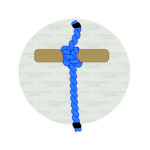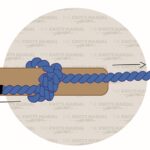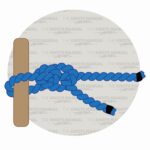The half hitch is the simplest kind of hitch. It is a knot whose working end wraps around an object and back under its standing part.
The half hitch knot is an insecure knot that people use with other knots to secure objects. These knots are simple to create and quick to undo, so they are useful when you need to rig up something fast.
The half hitch knot is both practical and decorative in nature. It’s useful for outdoor activities like boating and camping, but also for crafts.
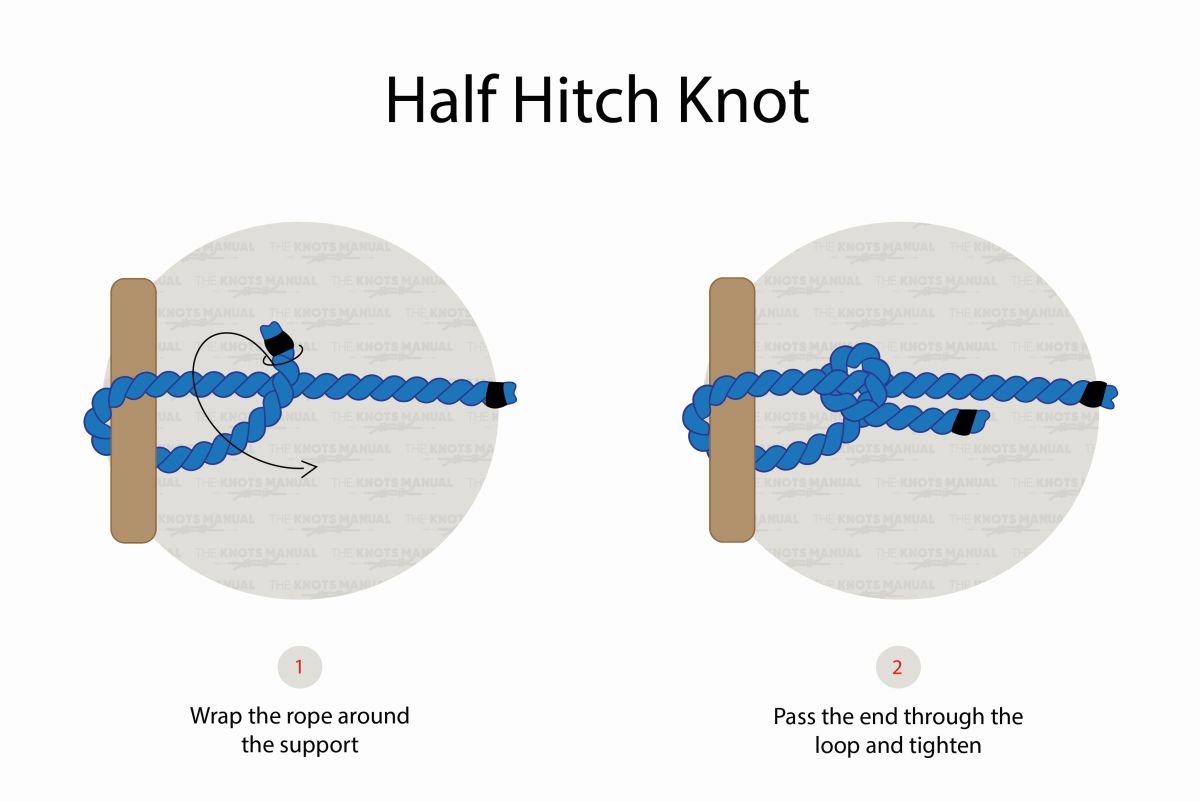
There are several variations of the half hitch knot:
- Two Half Hitches
- Vertical Half Hitches
- Alternative Half Hitch (Chain Stitch)
- Spiral Half Hitch (French Whipping)
- Round Turn Half Hitch
- Slippery Half Hitch
There are also several knots like the half hitch:
Can You Use The Half Hitch On Its Own?
No, you cannot use the half hitch on its own because it is insecure and can come loose. You can combine the half hitch with other knots, hitches, and bends. The half hitch acts as a support for those other structures.
Firstly, you can combine half hitch knots with the overhand knot, a simple single-strand stopper knot. An overhand knot prevents unreeving by tying one end of the rope around its own standing part.
Secondly, you can use the half knot, the beginning of a reef, or square knot. People use half knots for binding objects with both ends of the rope. People use these knots when tying shoestrings and packages or reefing or furling.
Thirdly, you can only use a half hitch by itself if it’s guiding a timber hitch. A half hitch combined with a timber hitch is a “killick” or “kelleg” hitch. Secure a timber hitch on the far end of a load, and a half hitch on the front end of the load. The half hitch guides the rope as it pulls and stabilizes the load.
How To Tie A Half Hitch Knot – Step By Step
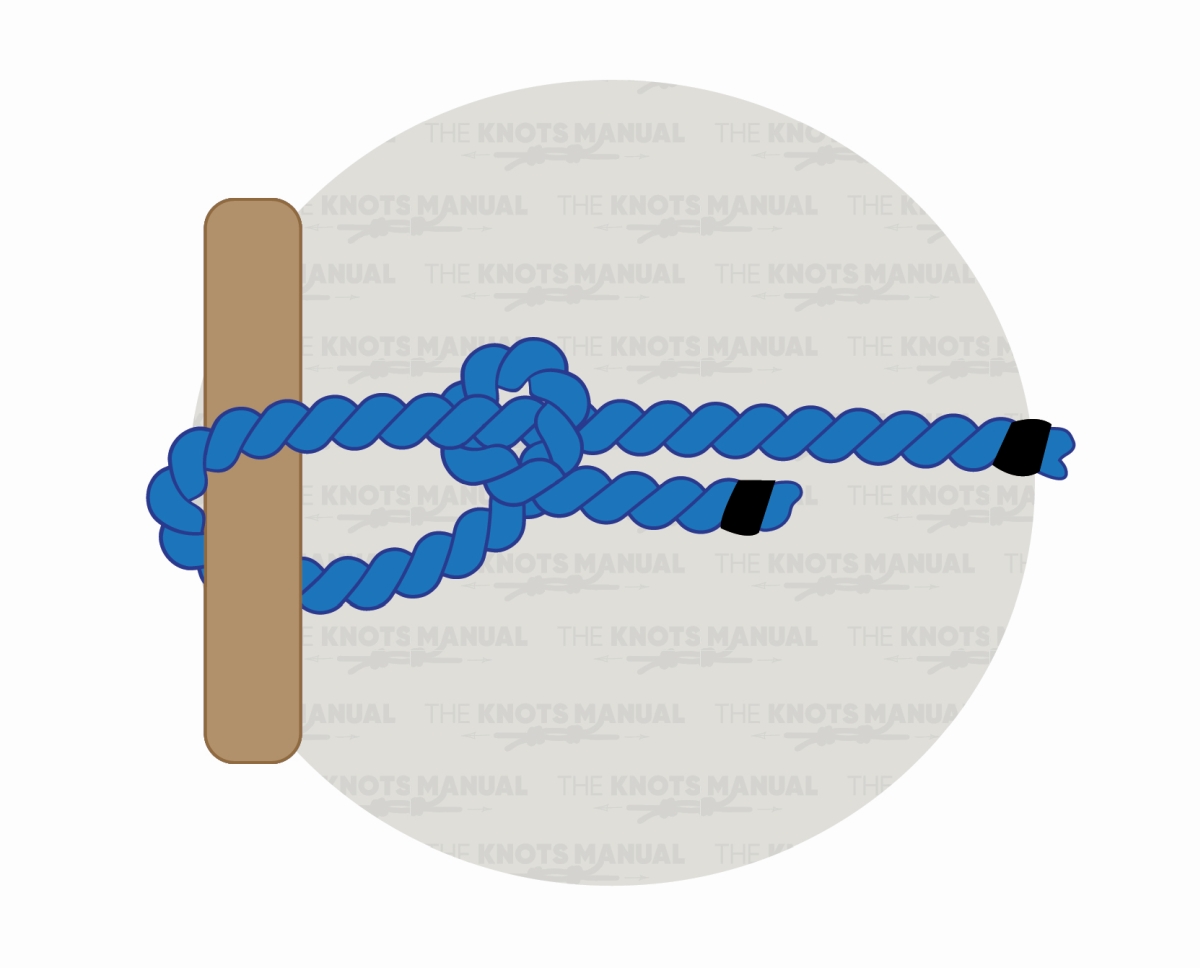
To tie a half hitch knot:
Step 1:
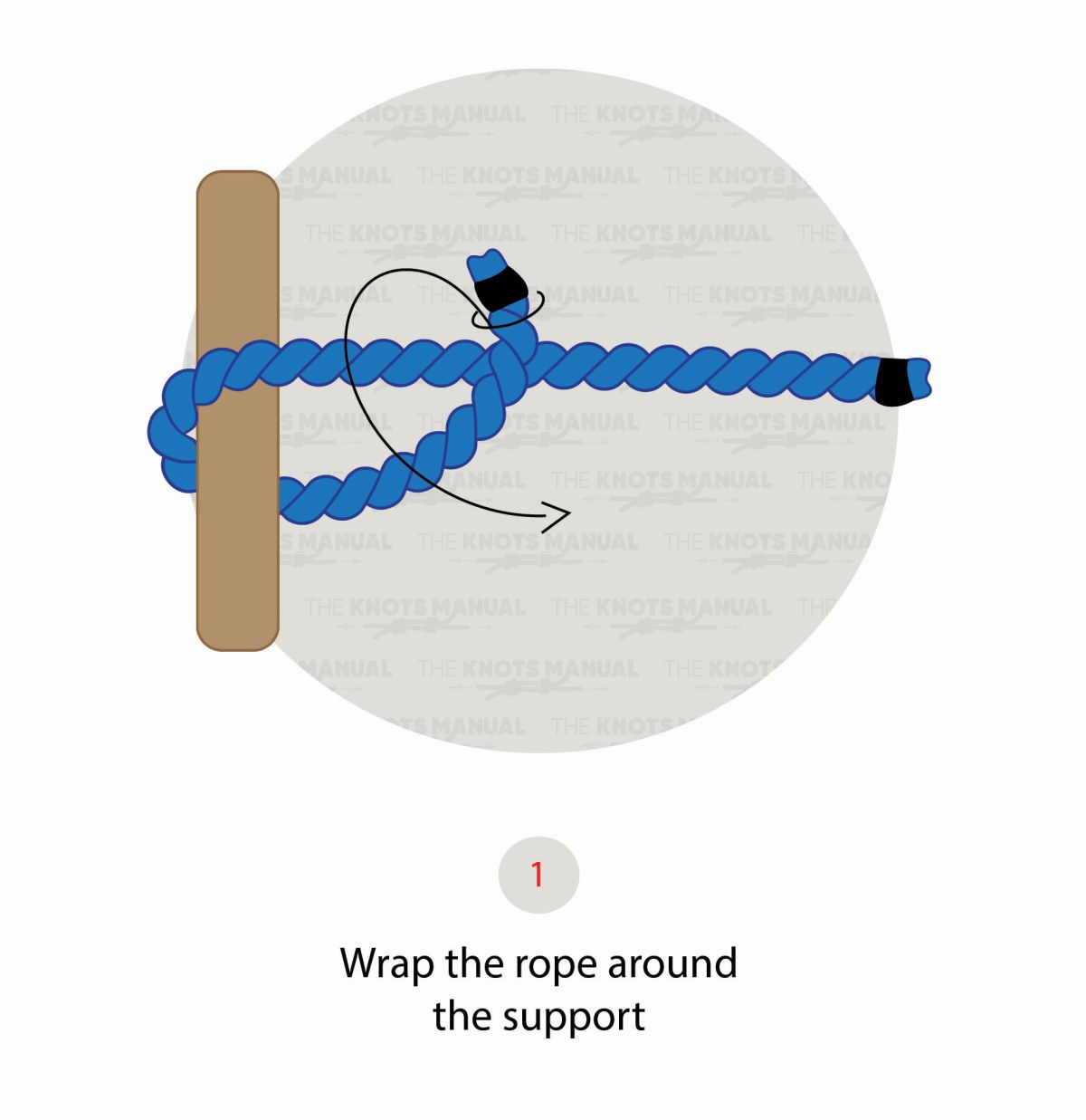
Wrap the rope around the support (object).
Step 2:
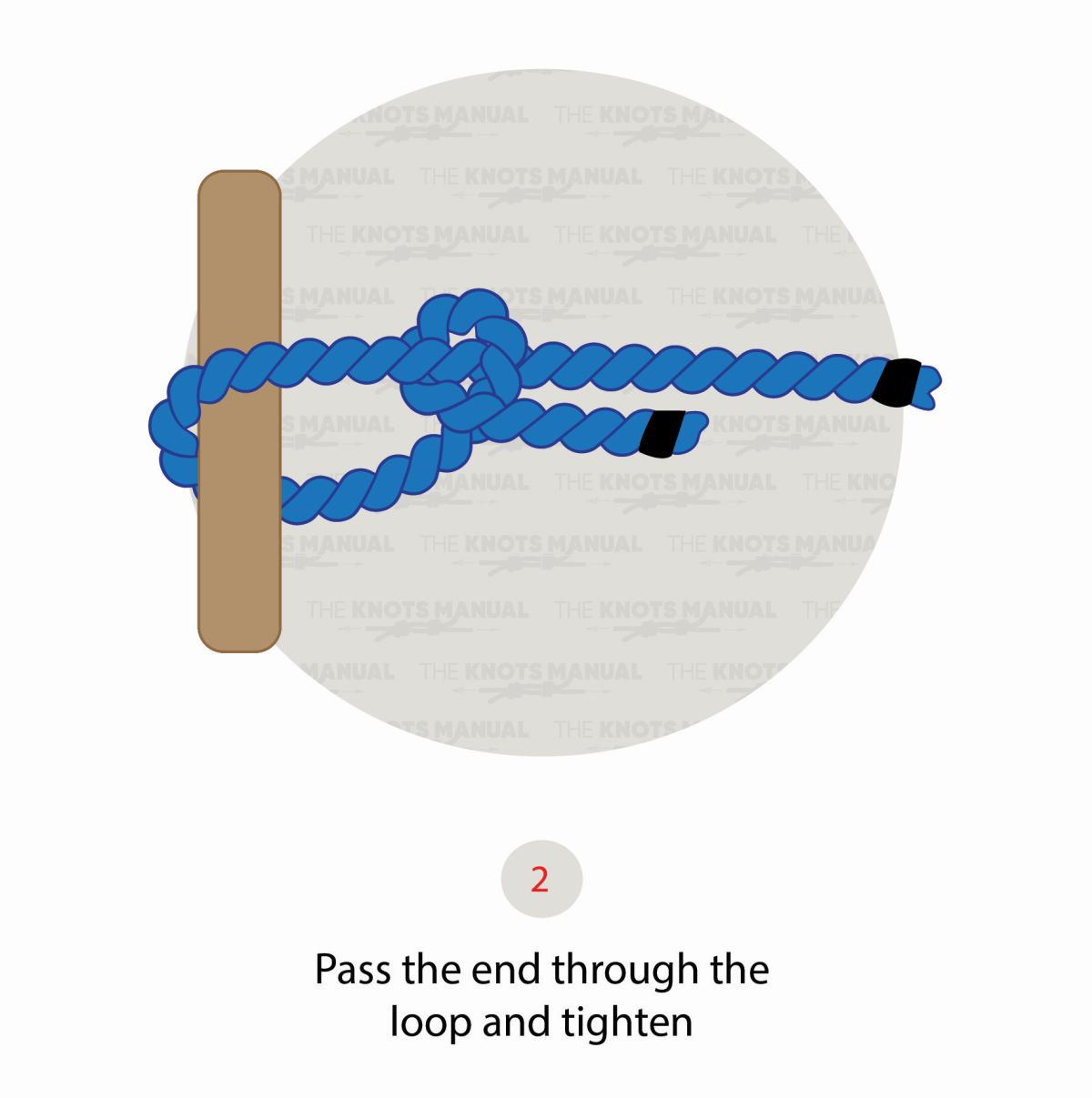
Pass the rope’s end through the loop and tighten the knot around the support.
What Is The Half Hitch Knot Used For?
Half hitches have both practical and decorative uses:
- Fishing/Fly Tying for Fly Fishing
- Paracord Survival Bracelets
- Jewelry-Making
- Knitting (Casting on Stitches)
- Weaving in Crochet
- Dream Catchers
- Wire Pulling Done by Electricians
- French Whipping/Half Hitch Whipping
One of the most common ways people use half hitches is for camping. You can quickly tie and untie a half hitch, so it’s useful when you’re in a rush. People use half hitches to secure their gear in trees, rig up hammocks, or secure tarps and rain flys.
9 Knots Similar To The Half Hitch
Six variations of the half hitch include the two half, vertical, alternative, spiral, slippery, and round turn half hitch. Knots like the clove, munter, and timber half hitch are similar and are often combined with the half hitch.
Two Half Hitches/Double Half Hitch: Two half hitches tied around a rope’s standing part. Two half hitches are more secure than one. People use them to secure a rope after wrapping it around piling or mooring.
To tie two half hitches, wrap the rope around the support and pass the rope’s end through the loop as you do for a regular half hitch. Then, pass the rope’s end through the loop a second time to create two half hitches.
Vertical Half Hitch: A vertical half hitch comprises a vertical double half hitch. One half hitch rests on top of the other. The vertical half hitch is a common decorative design in macrame.
Alternative Half Hitch (Chain Stitch): A chain-like knot of alternating half-hitches. The knots continue down the length of the rope. People use alternative half hitches to make bracelets, necklaces, belts, straps, and jump ropes.
Spiral Half Hitch/French Whipping: The spiral half hitch is a type of vertical half hitch. It repeats down the holding cord’s length to create a decorative spiral pattern. The spiral half hitch is popular in macrame to make jewelry, plant hangers, and hanging tables.
Round Turn With Two Half Hitches: A useful knot for attaching a load to a fixed object like a piling or rail. The round turn with two half hitches is more secure than a traditional half hitch. It reduces the initial strain of the load and makes it easier to tie half hitches.
Slippery Half Hitch: The bight of the rope passes through the loop rather than the end of the rope to prevent jamming.
Clove Hitch: First, the rope’s end passes around an object, then crosses over the rope’s standing part to create a loop. Second, the rope’s end passes around the object a second time to form another loop. Lastly, the end passes through the second loop. Clove hitches are most often used to fasten a rope to a tree, mast, or similar object.
Munter Hitch: The munter hitch is a simple adjustable knot used by climbers and cavers. Munter hitches wrap around a carabiner, pipe, or pole. They use the friction of the knot against the object to control how fast a climber descends the side of a rockface.
Timber Hitch: A timber hitch secures a single length of rope to a long object like a pole or branch. The knot is secure as long as tension remains on the knot, but you can easily untie it once you remove the tension. Loggers and arborists use the timber hitch.
FAQs
Is A Half Hitch A Granny Knot?
No, a half hitch is not a granny knot. A granny knot is a type of binding knot that secures rope around an object. It comprises two half knots tied on top of the other and works as a surgeon’s knot. A granny knot is also called a false, calf, lubber’s, or booby knot. It is like the square knot, or reef knot, but most consider it inferior.
What Is A Double Half Hitch Knot Used For?
You can use the double half hitch knot for mooring or general utility. Double half hitches are binding knots and are useful for moving large objects like logs. You can tie these knots around rings, docks, posts, trees, and other secure objects.
What Are The Advantages Of A Half Hitch Knot?
The main advantage of a half hitch knot is that it’s quick and easy to assemble and disassemble. People often use half hitch knots when they’re low on time in outdoor settings. Another advantage is the security they provide when combined with other knots.
Is The Half Hitch Knot The Same As An Overhand Knot?
The half hitch knot is a variation of the overhand knot. The only difference is the half hitch knot ties around an object, while a simple overhand knot is not.
Is A Double Half Hitch The Same As A Clove Hitch?
No, a double half hitch is not the same as a clove hitch. The two knots are similar, and a double half hitch is sometimes called a “clove hitch over itself.”
A double half hitch fastens around its own standing part after looping around an object. A clove hitch ties directly to the object.
